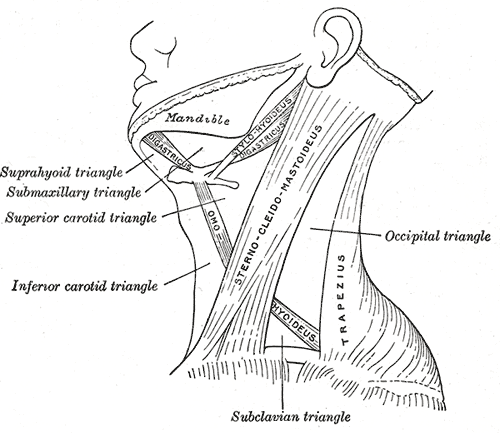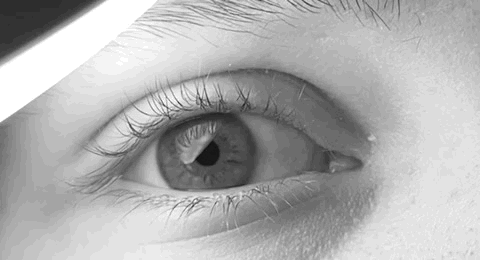|
Torticollis
Torticollis, also known as wry neck, is a dystonic condition defined by an abnormal, asymmetrical head or neck position, which may be due to a variety of causes. The term ''torticollis'' is derived from the Latin words ''tortus, meaning "twisted"'' and ''collum, meaning "neck."'' The most common case has no obvious cause, and the pain and difficulty with turning the head usually goes away after a few days, even without treatment in adults. Signs and symptoms Torticollis is a fixed or dynamic tilt, rotation, with flexion or extension of the head and/or neck. The type of torticollis can be described depending on the positions of the head and neck. * laterocollis: the head is tipped toward the shoulder * rotational torticollis: the head rotates along the longitudinal axis * anterocollis: forward flexion of the head and neck * retrocollis: hyperextension of head and neck backward A combination of these movements may often be observed. Torticollis can be a disorder in itself as wel ... [...More Info...] [...Related Items...] OR: [Wikipedia] [Google] [Baidu] |
Sternocleidomastoid Muscle
The sternocleidomastoid muscle is one of the largest and most superficial cervical muscles. The primary actions of the muscle are rotation of the head to the opposite side and flexion of the neck. The sternocleidomastoid is innervated by the accessory nerve. Etymology and location It is given the name ''sternocleidomastoid'' because it originates at the manubrium of the sternum (''sterno-'') and the clavicle (''cleido-'') and has an insertion at the mastoid process of the temporal bone of the skull. Structure The sternocleidomastoid muscle originates from two locations: the manubrium of the sternum and the clavicle. It travels obliquely across the side of the neck and inserts at the mastoid process of the temporal bone of the skull by a thin aponeurosis. The sternocleidomastoid is thick and narrow at its centre, and broader and thinner at either end. The sternal head is a round fasciculus, tendinous in front, fleshy behind, arising from the upper part of the front of the manubriu ... [...More Info...] [...Related Items...] OR: [Wikipedia] [Google] [Baidu] |
Benign Paroxysmal Torticollis
Benign paroxysmal torticollis (BPT) is a rare medical disorder affecting infants. Symptoms The defining characteristic of BPT is a tilting of an infant's head in recurrent episodes, for varying periods of time.Deonna, T. & Martin, D. (1981) Benign paroxysmal torticollis in infancy. Archives of Disease in Childhood. 56:956-959. Furthermore, the child's trunk may bend in the same direction as the head, giving the baby an overall curved shape; this complaint is known as tortipelvis.Drigo, P. Carli, G. & Laverda, A.M. (2000) Benign paroxysmal torticollis of infancy. Brain and Development. 22:169-172. In addition to this, the individual may also, but not necessarily, experience vomiting, pallor, ataxia, agitation, infantile migraine, unsteadiness of gait upon learning to walk, general malaise and nystagmus. The periods in which the child's head is tilted and other symptoms appear can last anywhere from a few minutes to a few weeks, with a frequency of anywhere from two per year to tw ... [...More Info...] [...Related Items...] OR: [Wikipedia] [Google] [Baidu] |
Crossbills
The crossbill is a genus, ''Loxia'', of birds in the finch family (Fringillidae), with six species. These birds are characterised by the mandibles with crossed tips, which gives the group its English name. Adult males tend to be red or orange in colour, and females green or yellow, but there is much variation. Crossbills are specialist feeders on conifer cones, and the unusual bill shape is an adaptation which enables them to extract seeds from cones. These birds are typically found in higher northern hemisphere latitudes, where their food sources grow. They irrupt out of the breeding range when the cone crop fails. Crossbills breed very early in the year, often in winter months, to take advantage of maximum cone supplies. Systematics and evolution The genus ''Loxia'' was introduced by the Swedish naturalist Carl Linnaeus in 1758 in the 10th edition of his ''Systema Naturae''. The name is from the Ancient Greek , "crosswise". The Swiss naturalist Conrad Gessner had used the word ... [...More Info...] [...Related Items...] OR: [Wikipedia] [Google] [Baidu] |
Antipsychotic
Antipsychotics, also known as neuroleptics, are a class of Psychiatric medication, psychotropic medication primarily used to manage psychosis (including delusions, hallucinations, paranoia or disordered thought), principally in schizophrenia but also in a range of other psychotic disorders. They are also the mainstay together with mood stabilizers in the treatment of bipolar disorder. Prior research has shown that use of any antipsychotic is associated with smaller brain tissue volumes, including white matter reduction and that this brain shrinkage is dose dependent and time dependent. A more recent controlled trial suggests that second generation antipsychotics combined with intensive psychosocial therapy may potentially prevent pallidal brain volume loss in first episode psychosis. The use of antipsychotics may result in many unwanted side effects such as Extrapyramidal symptoms, involuntary movement disorders, gynecomastia, impotence, weight gain and metabolic syndrome. ... [...More Info...] [...Related Items...] OR: [Wikipedia] [Google] [Baidu] |
Cerebrospinal Fluid Leak
A cerebrospinal fluid leak (CSF leak or CSFL) is a medical condition where the cerebrospinal fluid (CSF) surrounding the brain or spinal cord leaks out of one or more holes or tears in the dura mater. A cerebrospinal fluid leak can be either cranial or spinal, and these are two different disorders. A spinal CSF leak can be caused by one or more meningeal diverticula or CSF-venous fistulas not associated with an epidural leak. A CSF leak is either caused by trauma including that arising from medical interventions or spontaneously sometimes in those with predisposing conditions (known as a spontaneous cerebrospinal fluid leak or sCSF leak). Traumatic causes include a lumbar puncture noted by a post-dural-puncture headache, or a fall or other accident. Spontaneous CSF leaks are associated with heritable connective tissue disorders including Marfan syndrome and Ehlers–Danlos syndromes. A loss of CSF greater than its rate of production leads to a decreased volume inside the skul ... [...More Info...] [...Related Items...] OR: [Wikipedia] [Google] [Baidu] |
Myasthenia Gravis
Myasthenia gravis (MG) is a long-term neuromuscular junction disease that leads to varying degrees of skeletal muscle weakness. The most commonly affected muscles are those of the eyes, face, and swallowing. It can result in double vision, drooping eyelids, trouble talking, and trouble walking. Onset can be sudden. Those affected often have a large thymus or develop a thymoma. Myasthenia gravis is an autoimmune disease of the neuro-muscular junction which results from antibodies that block or destroy nicotinic acetylcholine receptors (AChR) at the junction between the nerve and muscle. This prevents nerve impulses from triggering muscle contractions. Most cases are due to immunoglobulin G1 (IgG1) and IgG3 antibodies that attack AChR in the postsynaptic membrane, causing complement-mediated damage and muscle weakness. Rarely, an inherited genetic defect in the neuromuscular junction results in a similar condition known as congenital myasthenia. Babies of mothers with myasthe ... [...More Info...] [...Related Items...] OR: [Wikipedia] [Google] [Baidu] |
Sandifer Syndrome
Sandifer syndrome (or Sandifer's syndrome) is an eponymous paediatric medical disorder, characterised by gastrointestinal symptoms and associated neurological features. There is a significant correlation between the syndrome and gastro-oesophageal reflux disease (GORD); however, it is estimated to occur in less than 1% of children with reflux. Symptoms and signs Onset is usually confined to infancy and early childhood, with peak prevalence at 18–36 months. In rare cases, particularly where the child is severely mentally impaired, onset may extend to adolescence. The classical symptoms of the syndrome are spasmodic torticollis and dystonia. Nodding and rotation of the head, neck extension, gurgling, writhing movements of the limbs, and severe |
Cranial Nerve IV Palsy
Fourth cranial nerve palsy or trochlear nerve palsy, is a condition affecting cranial nerve 4 (IV), the trochlear nerve, which is one of the cranial nerves. It causes weakness or paralysis of the superior oblique muscle that it innervates. This condition often causes vertical or near vertical double vision as the weakened muscle prevents the eyes from moving in the same direction together. Because the trochlear nerve is the thinnest and has the longest intracranial course of the cranial nerves, it is particularly vulnerable to traumatic injury. To compensate for the double-vision resulting from the weakness of the superior oblique, patients characteristically tilt their head down and to the side opposite the affected muscle. When present at birth, it is known as congenital fourth nerve palsy. See also * Harada–Ito procedure The Harada–Ito procedure is an eye muscle operation designed to improve the excyclotorsion experienced by some patients with cranial nerve IV ... [...More Info...] [...Related Items...] OR: [Wikipedia] [Google] [Baidu] |
Pathologic Nystagmus
Nystagmus is a condition of involuntary (or voluntary, in some cases) eye movement. Infants can be born with it but more commonly acquire it in infancy or later in life. In many cases it may result in reduced or limited vision. Due to the involuntary movement of the eye, it has been called "dancing eyes". In normal eyesight, while the head rotates about an axis, distant visual images are sustained by rotating eyes in the opposite direction of the respective axis. The semicircular canals in the vestibule of the ear sense angular acceleration, and send signals to the nuclei for eye movement in the brain. From here, a signal is relayed to the extraocular muscles to allow one's gaze to fix on an object as the head moves. Nystagmus occurs when the semicircular canals are stimulated (e.g., by means of the caloric test, or by disease) while the head is stationary. The direction of ocular movement is related to the semicircular canal that is being stimulated. There are two key forms of ... [...More Info...] [...Related Items...] OR: [Wikipedia] [Google] [Baidu] |
Trochlear Nerve
The trochlear nerve (), ( lit. ''pulley-like'' nerve) also known as the fourth cranial nerve, cranial nerve IV, or CN IV, is a cranial nerve that innervates just one muscle: the superior oblique muscle of the eye, which operates through the pulley-like trochlea. CN IV is a motor nerve only (a somatic efferent nerve), unlike most other CNs. The trochlear nerve is unique among the cranial nerves in several respects: * It is the ''smallest'' nerve in terms of the number of axons it contains. * It has the greatest intracranial length. * It is the only cranial nerve that exits from the dorsal (rear) aspect of the brainstem. * It innervates a muscle, the superior oblique muscle, on the opposite side (contralateral) from its nucleus. The trochlear nerve decussates within the brainstem before emerging on the contralateral side of the brainstem (at the level of the inferior colliculus). An injury to the trochlear nucleus in the brainstem will result in an contralateral superior obliqu ... [...More Info...] [...Related Items...] OR: [Wikipedia] [Google] [Baidu] |
Clubfoot
Clubfoot is a birth defect where one or both feet are rotated inward and downward. Congenital clubfoot is the most common congenital malformation of the foot with an incidence of 1 per 1000 births. In approximately 50% of cases, clubfoot affects both feet, but it can present unilaterally causing one leg or foot to be shorter than the other. Most of the time, it is not associated with other problems. Without appropriate treatment, the foot deformity will persist and lead to pain and impaired ability to walk, which can have a dramatic impact on the quality of life. The exact cause is usually not identified. Both genetic and environmental factors are believed to be involved. There are two main types of congenital clubfoot: idiopathic (80% of cases) and secondary clubfoot (20% of cases). The idiopathic congenital clubfoot is a multifactorial condition that includes environmental, vascular, positional, and genetic factors. There appears to be hereditary component for this birth d ... [...More Info...] [...Related Items...] OR: [Wikipedia] [Google] [Baidu] |





